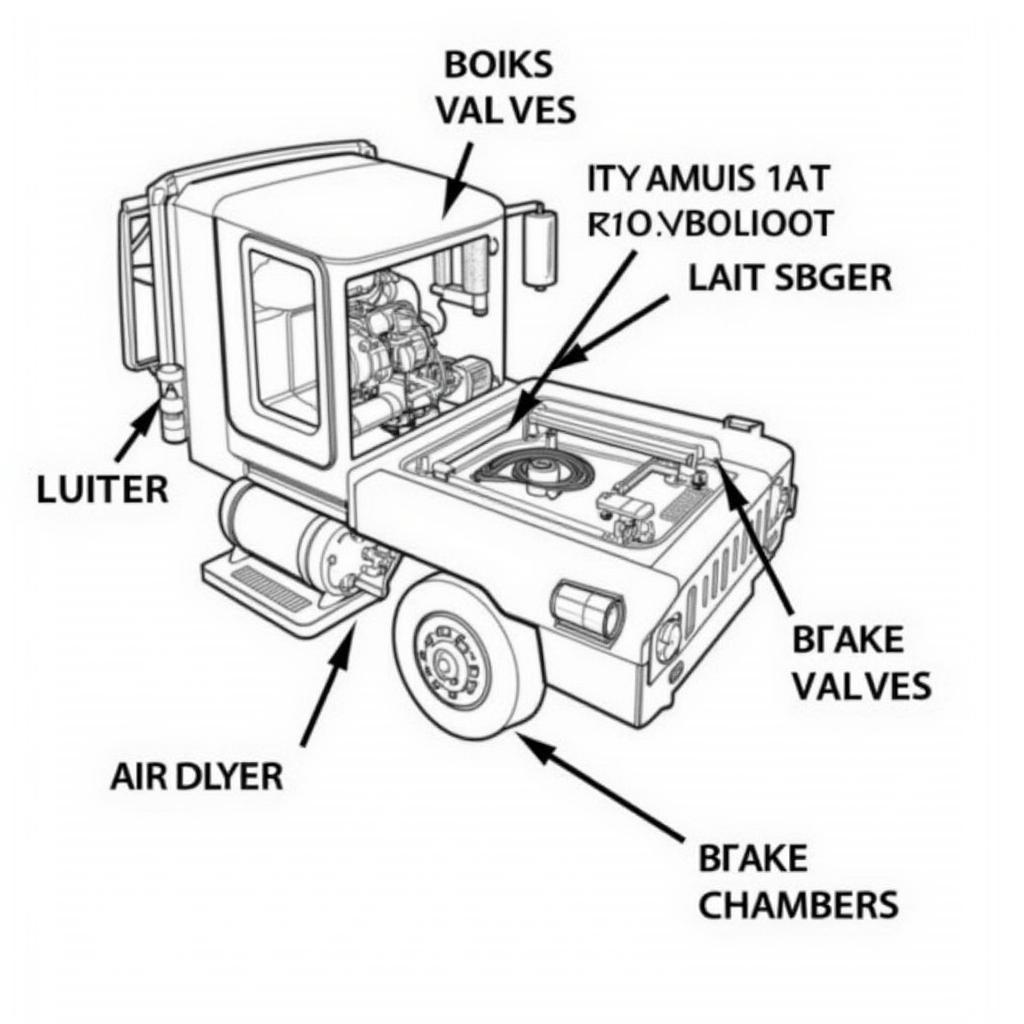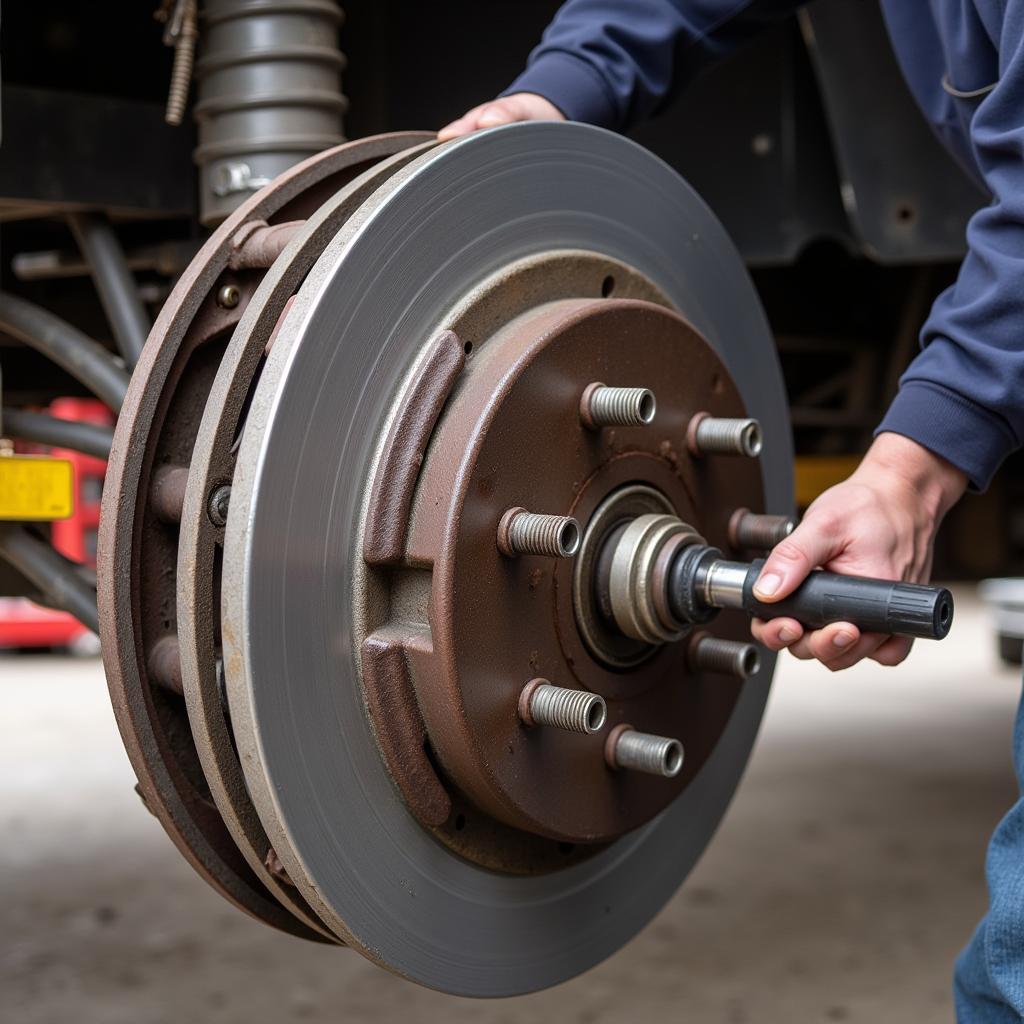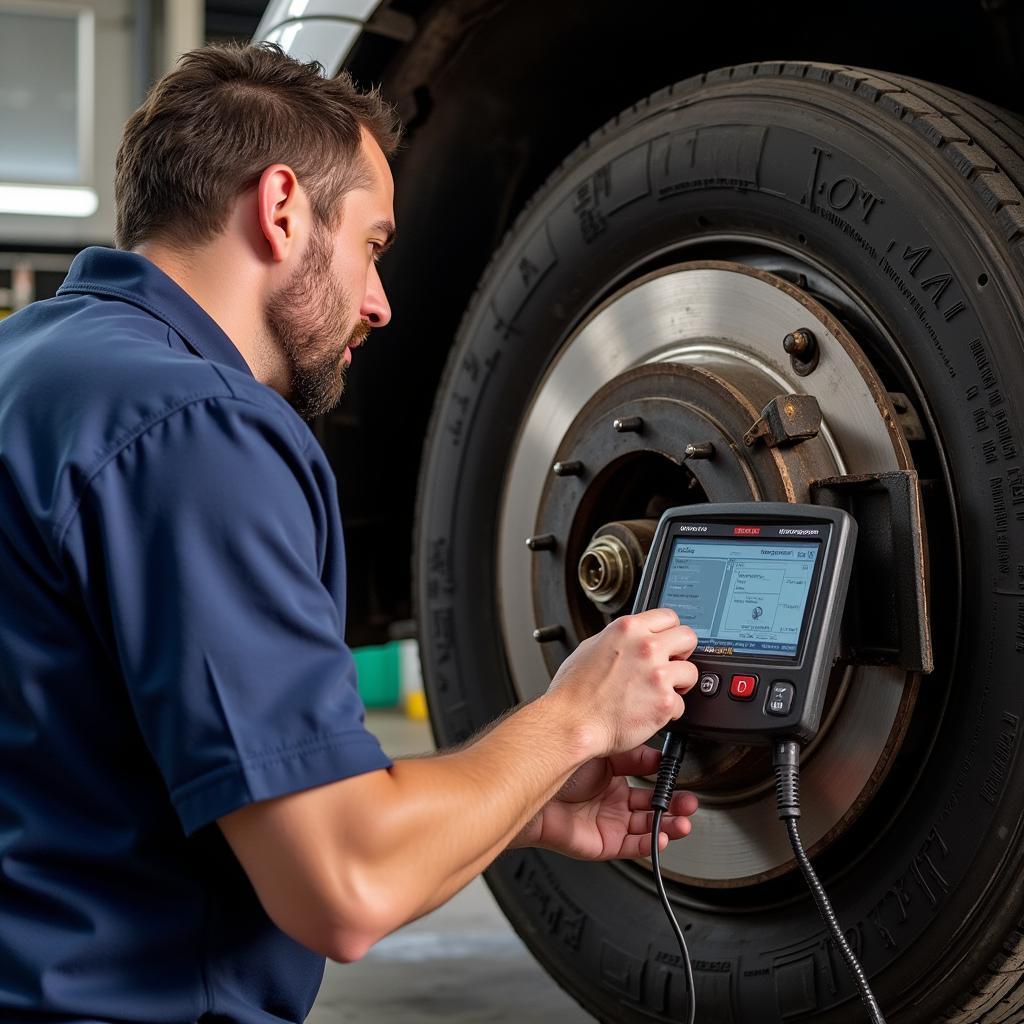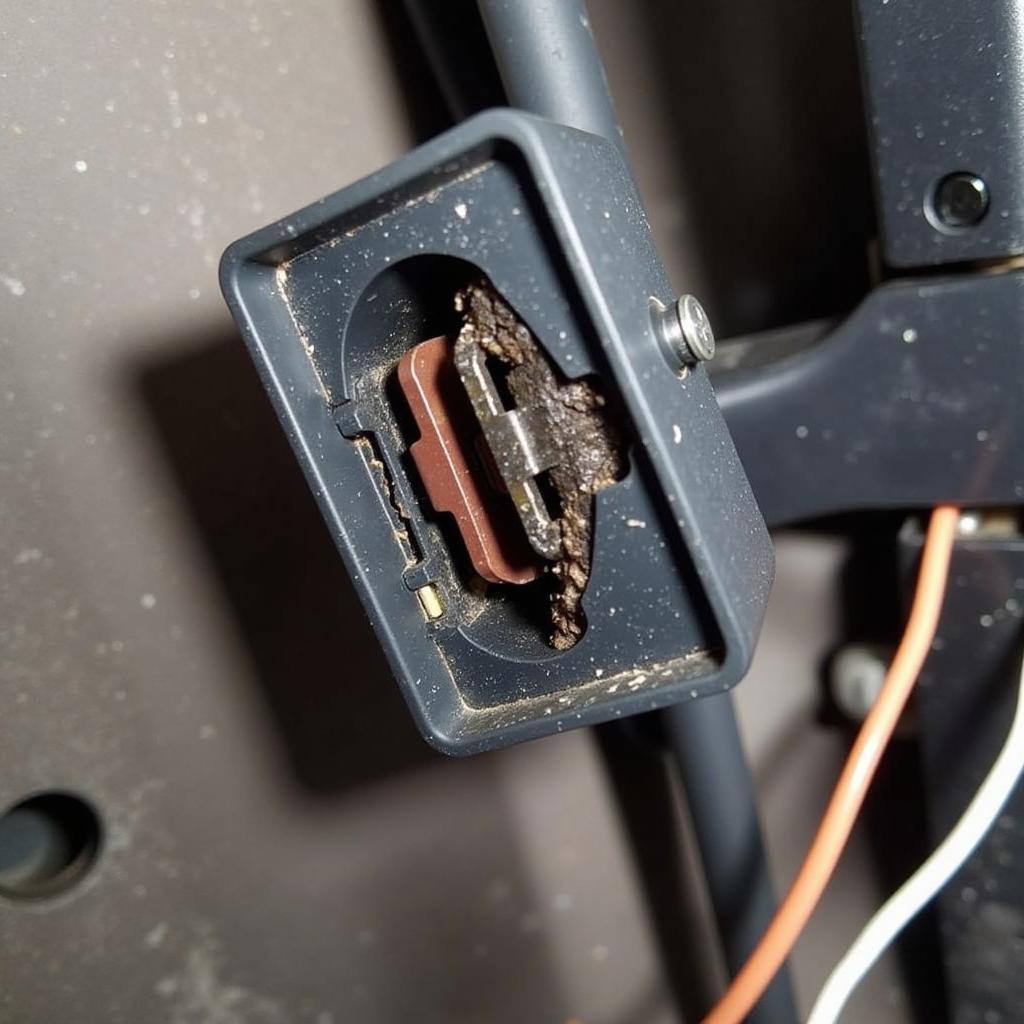The brake pressure warning light on your 2006 International 4300 is a crucial safety indicator that should never be ignored. It signals a potential problem within your truck’s air brake system, a critical component ensuring safe stopping power for these heavy-duty vehicles. Ignoring this warning light could lead to a loss of braking ability, putting you and others on the road at risk. This comprehensive guide will delve into the common causes, troubleshooting steps, and potential solutions for addressing the brake pressure warning light on your 06 International 4300.
Understanding Your Air Brake System
Before we dive into the specifics of the warning light, it’s essential to grasp the basics of how the air brake system in your International 4300 operates. Unlike conventional hydraulic brake systems found in smaller vehicles, your truck uses compressed air to activate the brakes.
Here’s a simplified breakdown:
- Air Compressor: This component generates the compressed air needed for the system.
- Air Dryer: This removes moisture from the compressed air, preventing corrosion and freezing within the system.
- Air Tanks: These store the compressed air for brake application.
- Brake Valves: These control the flow of air to the brake chambers.
- Brake Chambers: These receive compressed air, pushing a diaphragm that applies the brakes.
 Air Brake System Diagram
Air Brake System Diagram
Common Causes of the Brake Pressure Warning Light
There are several reasons why the brake pressure warning light might illuminate on your 06 International 4300 dashboard. Let’s explore the most frequent culprits:
1. Low Air Pressure
This is often the most straightforward cause. A leak anywhere in your air brake system, from a loose fitting to a damaged hose, can lead to a drop in air pressure.
2. Faulty Air Compressor
A malfunctioning air compressor won’t be able to generate the necessary air pressure, triggering the warning light.
3. Air Dryer Problems
A clogged or malfunctioning air dryer can restrict airflow, leading to pressure issues and activating the warning light.
4. Brake Valve Malfunction
Issues with the brake valves, such as a stuck valve or internal leak, can disrupt the air pressure balance in the system.
5. Worn Brake Components
Worn brake shoes, pads, or drums can affect the air pressure required to engage the brakes properly.
 Brake Chamber Inspection
Brake Chamber Inspection
Troubleshooting the Brake Pressure Warning Light
Before you hit the road, it’s crucial to address a lit brake pressure warning light immediately. Here are some troubleshooting steps you can take:
-
Check the Air Pressure Gauge: Locate the air pressure gauge on your dashboard. It will indicate the pressure levels in your air tanks. If the pressure is below the recommended range specified in your owner’s manual, you likely have an air leak.
-
Inspect for Air Leaks: Carefully examine all air lines, fittings, and components for any signs of leaks. Listen for hissing sounds that could indicate escaping air. Pay close attention to areas around the air compressor, air dryer, brake valves, and brake chambers.
-
Check the Air Dryer: Inspect the air dryer purge valve for proper operation. A malfunctioning purge valve can lead to moisture buildup and pressure issues.
-
Examine the Brake Valves: While visually inspecting the brake valves may not reveal much, you can listen for unusual noises or leaks coming from them.
“It’s important to remember that working with air brake systems requires caution. If you’re uncomfortable with any of these troubleshooting steps, it’s always best to consult a qualified mechanic.” – Mark Stevenson, Certified Diesel Mechanic
-
Consider Brake Component Wear: If you suspect worn brake components are contributing to the issue, a visual inspection of the brake shoes, pads, and drums is recommended. Look for signs of excessive wear or damage.
Resolving the Issue
Once you’ve pinpointed the cause of the brake pressure warning light, you can take appropriate action. This may involve:
- Tightening loose fittings.
- Replacing damaged air lines or hoses.
- Repairing or replacing a faulty air compressor or air dryer.
- Addressing issues with brake valves.
- Servicing or replacing worn brake components.
When to Seek Professional Help
While some brake pressure warning light issues can be resolved with basic troubleshooting, others require the expertise of a qualified mechanic, especially if you’re dealing with complex components like the air compressor or brake valves.
Consider seeking professional help if:
- You’re uncomfortable working with air brake systems.
- You’re unable to locate the source of the problem.
- The issue persists even after attempting troubleshooting steps.
- You suspect a major component failure.
 Professional Brake System Diagnosis
Professional Brake System Diagnosis
Conclusion
Addressing the brake pressure warning light on your 2006 International 4300 is essential for your safety and the safety of others on the road. By understanding the air brake system, common causes of the warning light, and basic troubleshooting steps, you can take proactive measures to ensure your truck’s braking system is in optimal working order. Remember, if in doubt, always consult with a qualified mechanic to diagnose and repair any issues with your truck’s brakes.

